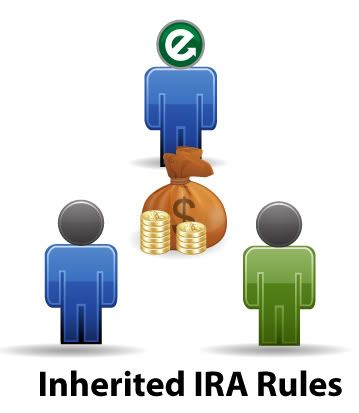Why must I take distributions from my inherited IRA?
Inherited IRA plans are not intended to permanently shelter IRA distributions from income taxes. Instead, they are intended to provide for the retirement of the IRA holder or, after they have died, for the support of their beneficiaries. As a result, the IRS has established IRA distribution rules so that investments will be depleted over the course of the IRA holder's or beneficiary's life expectancies. These rules are known as required minimum distributions (RMDs).
What if I miss a RMD from an inherited IRA?
If an IRA beneficiary does not take an RMD by the applicable deadline the beneficiary is subject to a 50% penalty on the amount that should have been taken out. If a spouse is the sole beneficiary of an inherited IRA and they miss an RMD, there is usually an added consequence. If this occurs, the IRA ceases to be a beneficiary IRA and is now looked at as the surviving spouse's own IRA.
What types of factors are considered for determining the distribution alternatives available for the beneficiaries of the inherited IRA following the death of an IRA holder? Many factors can impact what distributions options are available to an IRA beneficiary following the death of the IRA holder, however, there are three primary factors that must be considered:
3 Primary Inherited IRA Factors
- age of the IRA holder at the time of their death
- beneficiary's relationship to the deceased IRA holder
- Whether or not the beneficiary in question was the sole beneficiary of the IRA
Inherited IRA Rules and Income Options
Five-Year Rule:
Under the 5 year rule, the beneficiary of an inherited IRA can usually take distributions in any amount at any time. Keep in mind, the beneficiary must totally deplete their portion of the IRA by no later than the end of the year containing the fifth anniversary of the IRA holder's death.

With an Inherited IRA, what does to recalculate or not recalculate my life expectancy mean?
The tax regulations governing inherited IRA distributions provide two basic methods for determining their life expectancy factors. These methods are known as recalculation and non-recalculation.
When looking at the recalculation method, an IRA holder looks up a life expectancy table used for calculating required minimum distributions. This life expectancy table is provided by the IRS, and can be found on their website.
On the other hand, the life expectancy factor in the non-recalculation method, is looked up in the life expectancy table for the first distribution year, just like when a person uses the recalculation method. However, in the following years, one year is subtracted from the original life expectancy for each passing year since the first beneficiary distribution year, rather than going back to the table each year. Always keep in mind that the life expectancy of beneficiaries who are not spouses must always be determined using the non-recalculation method.
Life Expectancy Payments:
Under this option, an IRA beneficiary must begin to take income based on their life expectancy by no later than the end of the year following the year of the IRA holder's death. Spouse beneficiaries may wait until December 31 of the year the deceased IRA holder would have turned age 70½ to begin taking distributions under this rule.
What inherited IRA distribution options are available when a deceased's estate is named as the beneficiary of their IRA?
The options for distributions available to an estate as the beneficiary of an Inherited IRA vary depending on whether or not the IRA holder died before their required beginning date. If the IRA holder has died before their required beginning date, the assets in the IRA may be paid to the estate using the five-year rule. If the account holder died on or after their required beginning date, the estate can take distributions over the remaining life expectancy of the deceased IRA holder.
The views and opinions expressed herein are the views and opinions of the author and do not necessarily reflect those of Nasdaq, Inc.
